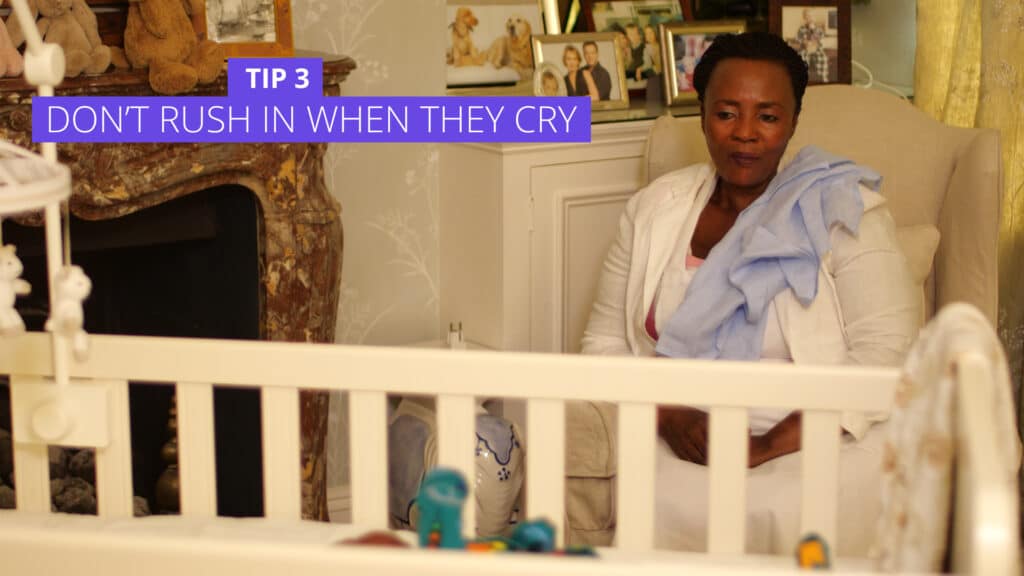One of the most common problems new parents face is encouraging their baby to self-settle in the cot.
Here are some top tips on how our Night Nannies might guide a baby to go to sleep on their own. Click on the video above for more information.

Create a calm sleep environment
Make sure you have a regular routine you follow at bedtime – this can help babies to learn when they should be going to sleep. Routines could include: a bath, stories, lullabies and time together with gentle play, kissing, hugging, maybe a light massage – then bedtime.
These routines will ensure that the bedroom is not associated with being left alone and therefore does not becomes a feared place.
Some babies might like ‘white noise’ or a fan in the background, but make sure this is nothing stimulating in their cot like a musical mobile at night, as this could distract them from sleeping. You could also use a night light with a yellow or red bulb. This helps with circadian rhythm formation and is far less harsh on you baby’s senses and brain if they wake in the night.
Make sure your baby’s room is darkened. You could buy some black out blinds, which is useful for keeping early morning sunshine out.

In the first month, use a swaddle or a baby sleep sack, this helps create a cosy warm space for your baby.
You could also use a sheet or a muslin that smells of you and tuck this safely into your baby’s cot so they have your familiar smell around them which is so comforting.

Guide your baby to self settle:
Try from the start to put your baby down in his cot AWAKE without always using the breast or a bottle, so they get used to going to sleep on their own. Try not to get into the habit of rocking your baby to sleep every time – you may be there for hours! Try also to avoid eye contact at night when you are trying to put them down.
The minute your baby cries, it is tempting to rush over to the cot and pick them up. Try not to – try this:
Wait a few moments and see if they will settle themselves back to sleep.

If your baby doesn’t settle then try patting and singing to them in the cot for a few minutes.
Do not forget the power of your voice – your baby has been able to hear this from inside the womb and singing or talking gently to your baby can be hugely comforting. Continuing this when putting baby down in the cot ensures baby knows you are close. Often hearing the sound of your voice can encourage your baby to settle itself.

If your baby still doesn’t settle and their crying is urgent, pick them up and comfort them, but then put your baby back in the cot, soothe them and then leave and see if they will settle after 2 or 3 minutes. If they don’t, repeat the process.
Alternatively, pick your baby up, wind them, then put them in the cot and soothe them. Leave them for 2 or 3 minutes and repeat the process.

You can try leaving them a little longer each time but never more than 5 minutes. Your baby will quickly learn to self settle if you follow simple routines like this.

![How To Self-Settle Your Baby [4 Quick Tips]](https://www.nightnannies.com/wp-content/cache/flying-press/084b472e05b84a776c40b321a594eee4.jpg)